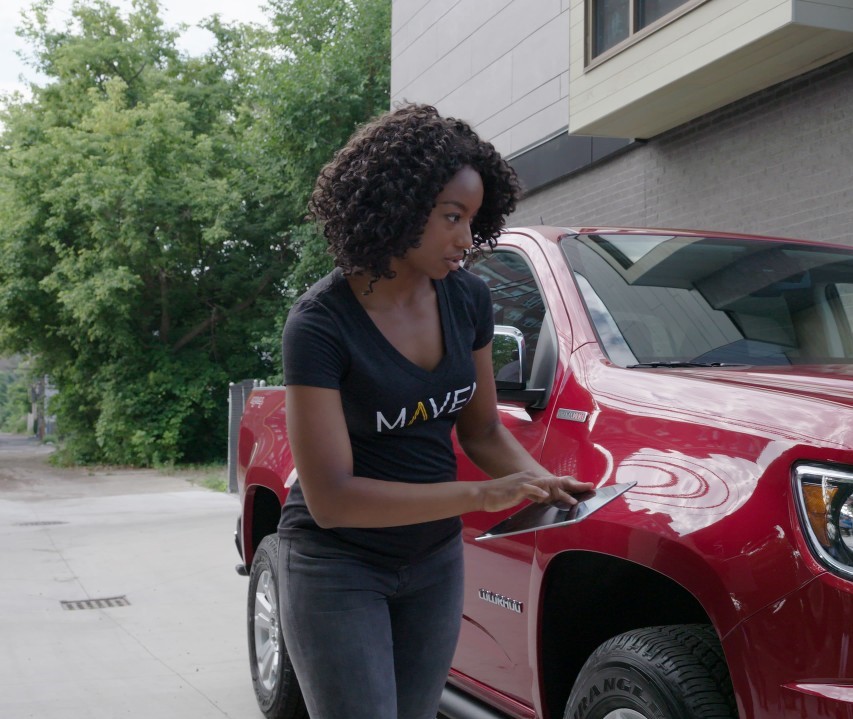Here are thoughts and predictions for the new year, in no particular order. Some (particularly the last one) are safe bets.
Electric Vehicles
They are coming, in high volume with high prices – on average $10k higher than vehicles with internal combustion engines.
Every manufacturer is investing billions to inundate the market. The roll out starts in earnest in the U.S. this year.
Currently EVs represent about 1.7% of the U.S. market right now, up from 1.5% last year, but at that growth level, combined with the higher price, combined with the demonstrably tepid reception by the market even with an average $7k federal incentive, doesn’t anyone wonder (outside of raging Tesla fans) who actually is going to buy this onslaught of electric vehicles? I know I do.
Every OEM currently loses money on electric vehicle production/sales, including the much vaulted and revered Tesla. So am I the only one wondering what happens if/when the federal incentives run out, all these EVs hit the market at about the same time and public demand isn’t there? We don’t have long to wait to find out.
Truck Loads of Money
Despite fanatical enthusiasm for Elon Musk and Tesla, large conventional pick-up trucks and SUVs will continue to dominate the vehicle landscape in the U.S.
With profit margins on these vehicles as high as 30%t ($15,000 each), and accounting for the vast majority of General Motors, Ford and FCA profits (72% of GM’s profit in North American alone last year), if any of the OEMs are going to make money to fund their money-losing EV development, without major new government subsidies, they will have to dominate sales with these pickups and SUVs.
The Amazing Elon
Despite never making money as a company in any year of its existence, and, indeed, losing boatloads of cash, Elon Musk’s Tesla will continue to defy gravity, and the stock price will be supported by zealot shareholders.
 Really now, if any other vehicle manufacturer CEO had said, back in May 2019, that within just one year their product would be completely self-driving, so much so that you will be able to send your vehicle out by itself while you are at work to make an extra $30k a year for you in autonomous mode (making other vehicles “as obsolete as a horse” for transportation), they would have at least been held accountable, let alone laughed off the stage. (Elon Musk, left)
Really now, if any other vehicle manufacturer CEO had said, back in May 2019, that within just one year their product would be completely self-driving, so much so that you will be able to send your vehicle out by itself while you are at work to make an extra $30k a year for you in autonomous mode (making other vehicles “as obsolete as a horse” for transportation), they would have at least been held accountable, let alone laughed off the stage. (Elon Musk, left)
But not Mr. Musk. And that truck with unbreakable windows? (Note: this prediction comes with a caveat: If gravity every does prevail, watch out).
The Long Wait
Autonomous vehicles are not coming anytime soon, at least not beyond some routine “gated” areas and prescribed routes.
The irrational exuberance on this topic seemed to have slowed down about mid-year, when Daimler noted their “reality check” on plans for 10,000 robotaxis by 2021 and Ford CEO Jim Hackett said, “We overestimated the arrival of autonomous vehicles.”
Some Tesla zealots actually still believe his timetable of the Model S being fully autonomous by May with a flip of a switch, but I wouldn’t bet on it.
Get Real
Ride sharing is for real, and those dealers who can capture the rental, sales and service work of this 3M+ owner-operated fleet are sure to prosper over those who do not.
What’s amazing is that this is by exponential proportions a larger collective fleet (vehicles used way more than for individual use) than any traditional fleets that have been catered to by OEMs, fleet management companies and dealers alike, yet it is still largely ignored by these constituencies.
OEMs and fleet management companies would have an issue, as these fleets are not centrally managed, and so one can’t just make a deal with the top executives that easily.
But dealers are best experienced and positioned to handle small local fleet owners (and have been for decades), so why more aren’t reaching for, accommodating and welcoming this business more aggressively confuses me for now. I think this will change soon.
Wake Up, Dealers
Mobile service work is coming, and will be more of the norm than the exception in the years to come.
“If dealers don’t wake up and get out on the road, competitors are going to take your repair business, just like Safelite did with glass business,” says David Bergamotto, dealership service manager of Park Avenue BMW in Rochelle Park, NJ.
That dealership is participating in BMW of North America’s pilot program providing incentives for dealerships to assign mobile technicians to help complete recall work.
With national players including YourMechanic, Wrench, RepairSmith and Spiffy growing at an exponential rate, mobile service will soon be a more prevalent option for consumers.
OEMs’ Car-Sharing Retreat
This one is sort of controversial but comes from real observation: OEMs will continue to dip their toes in the water with car sharing and shared mobility, and to the extent that they do, will continue to lose money.
 The latest closing down in North America of ShareNow/ReachNow (known in other parts of the world as Car2Go) the joint BMW/Daimler venture into shared mobility and ridesharing, GM’s Maven retreat in many U.S. cities, and Ford’s sale of Caravan (and right after the large financial problems of Fair.com, Caravan’s buyer), all seem to point to the same conclusion. (Maven, left)
The latest closing down in North America of ShareNow/ReachNow (known in other parts of the world as Car2Go) the joint BMW/Daimler venture into shared mobility and ridesharing, GM’s Maven retreat in many U.S. cities, and Ford’s sale of Caravan (and right after the large financial problems of Fair.com, Caravan’s buyer), all seem to point to the same conclusion. (Maven, left)
Either this business sector isn’t very good and no one can make a go of it (which is doubtful as some companies aren’t doing that bad; actually the closer operators are to conventional rental core skills the more successful the operators seem to be), or, more likely, the OEM’s just are not that good at b-to-c businesses, and should probably stay out of them.
I’ve lived through the time when large rental companies were owned by the manufacturers back in the early 1990s (a disaster for both sides), and OEMs forayed into dealership ownership in the late 1990s (an equally unsuccessful conclusion), so why would we expect any different results for a highly b-to-c business such as car sharing.
My bet here is on the rental companies, dealers and others who live and breathe a b-to-c mindset to make these business work.
Long Live Dealerships
Online automotive e-commerce is not going away. It’s going be become more prevalent in shopper transactions for new and used vehicles. But neither is the physical bricks-and-mortar piece of the equation going away.
Studies indicate that while more of a vehicle transaction is gravitating towards an online/in-app procedures/process, a visit to a dealership for most folks is still the preferred final step.
This seems a perfect opportunity for dealers to get in now and leverage the online process for both new and used vehicles (and please consider DriveItAway for turnkey immediate used-vehicles sales, rentals, subscriptions and the new rent-to-own market, particularly for subprime sales; I had to give a small plug for the new year).
Dealers should get involved in this area or start-ups and newcomers will find ways to add in the last physical transaction piece on their own.
For example: Carvana’s easy home delivery and return policy or the bigger existential threat, Amazon’s online comprehensive personal consumer car leasing (with home delivery) experiment in Spain.
This new-car leasing service includes Amazon-backed maintenance, insurance, tire change, registration and “excess mileage buffer” with “low prices that include free doorstep delivery and a 50-km/30-day return policy.”
Amazon is known for trying out new business initiatives in smaller European markets before launching in places like the U.S.
Yes, this could be big disrupter in the years to come.
Affordability
New cars are getting more expensive and thus less affordable. Six- and seven-year loans are more prevalent in taking folks out of the market. And there’s that impending onslaught introduction of new EVs and hybrid models. These will not help the affordability situation. In fact, they will make it worse.
For the next few years, used cars (with good old internal combustion engines; anyone see how bad the residual values are for electric vehicles, Tesla’s notwithstanding?), will continue to be the focus of vehicle sales.
The subprime market is growing, as credit scores in the U.S. in general are not getting better.
Also, the fact that the largest vehicle-buying segment of the future has dubious credit scores only makes things look more challenging.
 Millennials will represent 50% of the workforce in 2020, and people under 30 are the highest percentage (67%) with a FICA score under 621. The next highest group (59%) with a FICA score under 621 are age 30-39. (Millennials, left)
Millennials will represent 50% of the workforce in 2020, and people under 30 are the highest percentage (67%) with a FICA score under 621. The next highest group (59%) with a FICA score under 621 are age 30-39. (Millennials, left)
It isn’t that Millenials don’t want to own vehicles. But with student debt and other burdens, this sector is the least financially able to afford a vehicle (or a house for that matter). This is glaringly simple economics.
Take This One to the Bank
I’d like to close with an everlasting prediction. Legend has it that a young man found himself in the presence of the legendary financier J. P. Morgan. Seeking advice, he asked Mr. Morgan for his opinion as to the future course of the stock market.
The supposed classic reply: “Young man, I believe the market is going to fluctuate.”
In this era of new mobility, the market will fluctuate, like it always does.
John F. Possumato is an attorney, the founder of Automotive Mobile Solutions and DriveItAway, and a graduate of the University of Pennsylvania’s Law School and Wharton School of Business. He can be reached at [email protected] and 856-577-2763.





